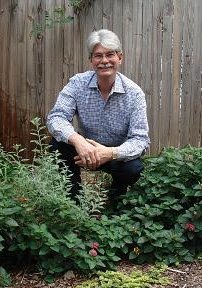I also watched Larry King Live friday night as he interviewed Steven Hawking and his coauthor of their most recent book entitled The Grand Design. I have not read the book yet, but intend to go out today and purchase it. According to Hawking and Mlodinow, their purpose in the book is to reveal what can be proved, scientifically, about how the Universe operates. Because God cannot be reduced to a mathetical equation, their intention seemed to be to research what in the universe could be proved through mathetical equation, quantum physics, and geometry as the foundation for their conclusions. Interesting subject, this.
The late Edmond Bordeau Szekely, in the introduction to his work, The Essene Gospel of Peace Book Two: The Unknown Books of the Essenes, had this to say, "There are three paths leading to Truth. The first path is the path of the consciousness, the second that of nature, and the third is the accumulated experience of past generations, which we receive in the shape of the great masterpieces of all ages. From time immemorial, man and humanity have followed all three paths."
The three paths, he says, are The path of consciosness, The path of nature and the path of the wisdom, knowledge and experience acquired by the great thinkers of all ages and transmitted to us in the form of great teachings, the great sacred books or scriptures of universal literature. He says the Essenes understood this and therefore, approached the Truth in this threefold manner. Otherwise, Truth would not be allsided, but skewed to the single path utilized. Each path must harmonize with the other for a totality of understanding to emerge.
He determined that the Great Mystics of all time considered the path of consciousness to be the most immediate reality for us all and that consciousness is the key to understanding the universe. They determined, he relates, that consiousness is not only in us but is us! These same mystics discovered that the "laws of human consciousness contain an aspect not found in the laws governing the material universe."
This aspect can be seen, he says, in "a certain dynamic unity" that exists in our consciousness, where one is at the same time many. We can have many simultaneously different thoughts, ideas, associations, images, memories and intuitions that occupy our consciousness in a split second, and yet he says, "...all this multiplicity will still constitute only a single dynamic unity."
Because of this, he says, "....the laws of mathematics, which are valid for the material universe and are a key to its understanding, will not be valid in the field of consciousness, a realm where two and two do not necessarily make four. The mystics also found that measurements of space, time and weight, universally valid in nature and throughout the material universe, are not applicable to the consciusness, where sometimes a few seconds seem like hours, or hours like a minute."
Human consciousness, you may have discovered for yourself, as the mystics determined does not exist in space and time. It cannot be measured. You may have also noticed that your own consciousness is the most immediate and inmost reality for your experience of life. It is also the most immediate source of energy, harmony and knowledge for each of us. We are the most accurate source of information concerning our lives. No one can know what is happening inside us better than we can.
But, says Szekely, that there are dangers with all three paths. He says the danger for the mystic is that they create for themselves an ivory tower, removed from the reality of life itself. The path of nature, the realm of science, followed by the scientist, "...like the mystic, sometimes falls into exaggerations..." and finally fails to explain with full satisfaction any solution to our questions of existence, life and the universe.
The problem in utilizing the third path, that of universal knowledge and wisdom found in the great literature, art, and teachings handed down to us lies in the different methods utilized to understand them. The way of the theologian and organized religion, says Szekely, "is to consider each text literally . . . resulting from a long process of petrification, by which truths are inevitably transformed into dogmas."
The danger of this, says Szekely, is the theologian "...runs into many endless contradictions and complications, and he reaches a conclusion as far removed from the truth as that of the scientific interperter of these texts who rejects them as entirely valueless and without validity." He also says there is another danger inherent in this path and that is ".... to believe, as do certain symbolists, that these books have no more than a symbolic content and are nothing more than parables. With their own particular way of exaggeration these symbolists make thousands of different and quite contradictory interpretations of these great texts."
So, I have related the above to remind you that living in choice means to look at all things, all information one must allsidedly explore to find the Truth.
And just from the conversations I heard on Larry King Live, even though Hawking and Mlodinow may have answered questions we have not heretofore had answers to, we are; however, it seems, not one step closer to defining consciousness, the reason for our existence, the purpose of life or the origins of the universe. Because theirs is the path of nature or science.
Perhaps as I read the book, I may change my mind, who knows.

No comments:
Post a Comment